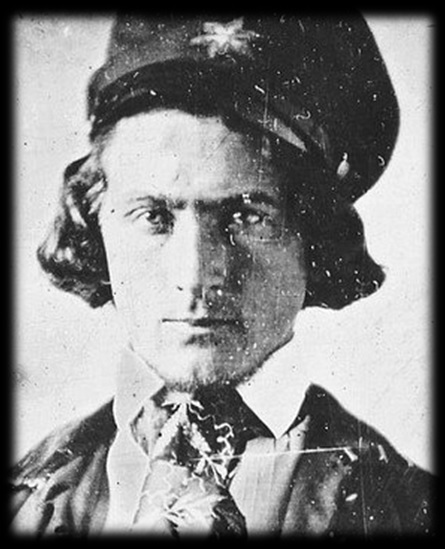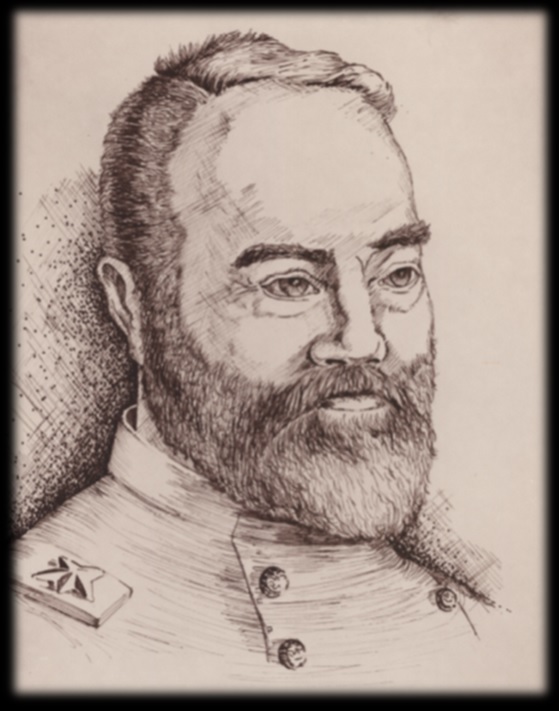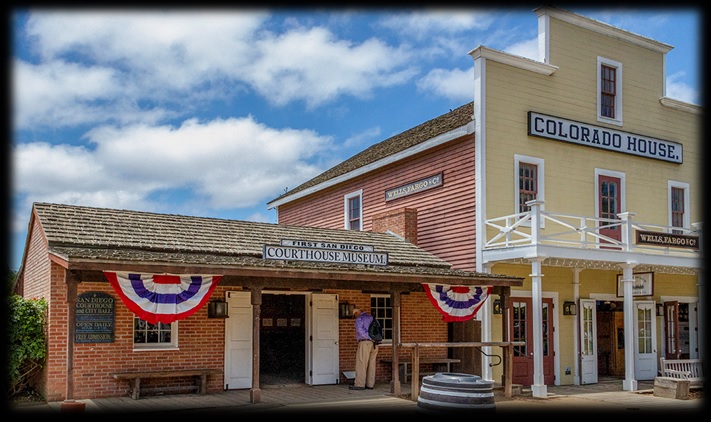




CAVE COUTS

JOSHUA BEAN


Within months of San Diego officially becoming an American town, one of the men chosen to build it would attempt to pull the biggest heist in its history.
The scheme started when Mayor Joshua Bean tried to steal the building housing the courthouse and City Hall. Since the structure was too large to be lifted up and carried away, Bean tried to steal it in a much more professional manner, with documents.
Bean was the mastermind of the scheme but when he realized the size of the task he recruited Cave Couts, a former Army officer who had moved to San Diego after getting into trouble for bookmaking. After laying out his plan, Bean officially made Couts part of the deal when he sold him half of the take for $2.50.
The two men set things in motion on June 15, 1850, shortly after Bean took office. As soon as Bean walked into City Hall, he began to throw away all official paperwork. When other members of the council demanded to know what he was doing, the new Mayor told them he was now the building’s owner and everything belonged to him.
To bolster his ownership claim, Bean produced a deed signed by the former landowner, Senora Amador, which clearly showed he had bought the property. To further persuade the council members, he told them if they not did accept the deed he would evict them from their offices by December. Meanwhile, as the Mayor was trying to pull off his end of the scam, Couts was busy constructing a two-story building next door.
Much to both men’s surprise, the council wasn’t intimidated and began an investigation into Beans claim of ownership. They first questioned Senora Amador and found that while she did sell the land to Bean, she was under the impression he was acting on behalf of the city. Amador said if she had known he was buying the land for his personal use, she would never have sold it.
The council then checked the past ownership of the lots and made a surprising discovery. Senora Amador never had a legal right to the property! When Alcalde Alvarado sold the deed to Amador’s husband several years earlier he failed to attach an official seal to the document and did not use official town paper. Alvarado also neglected to record the price of the property on the deed. Because the family wasn’t sure about the legality of the transaction, the Amador’s never occupied or improved the land. When soldiers built the structure several years later apparently no one bothered to check to see who actually owned the land.
In light of this the council members wrote up the results of their investigation and, on August 20, 1851, filed a lawsuit against both Bean and Couts. In the lawsuit the plaintiffs were listed as the “Mayor and Common Council of the City of San Diego” even though Bean was both Mayor and one of the defendants.
The suit went to trial in Judge Witherby’s courtroom in the very building the two men were trying to steal. After hearing the council’s arguments, it was Bean’s turn to present his side. The Mayor began by telling Judge Witherby he knew Amador's ownership of the land was null and void, but pointed out that in such a case the lot reverted back to the city, and as Mayor, he could dispose of the property as he wished.
After hearing Beans argument, Judge Witherby questioned why, if he really believed that, did he bother to buy the deed?
Why not just stake a claim to it? The Mayor was stumped. Next came a strange twist in the lawsuit. Midway through the
trial, the council told Judge Witherby they had changed their minds and now wanted to recognize Bean’s claim to the property. They further stated they wished to drop their lawsuit against the two men and allow both sides to pay their own legal costs. The judge was perplexed at the sudden change of heart but agreed to allow it and with that he awarded the courthouse to Bean and Couts.
Nine days after being awarded the property, the two men changed their minds and were back in court willing to sign the deed back over to the city. In light of the request, Judge Witherby returned ownership back to the council.
To punish Bean and Couts, Judge Witherby ordered the men to pay all court cost for the trial. In an act of kindness towards Couts, the judge allowed him to keep the building he had constructed next door. Couts later opened it as a successful hotel known as the Colorado House. Today the building still stands next to the courthouse and houses a Wells Fargo Museum.
The courthouse theft case of 1851 wouldn’t be the last time Couts would be involved in the justice system. He would re-appear several more times as a defendant in murder trials in which he was acquitted.
Joshua Bean wouldn’t be so lucky. He was murdered in November 1852.
